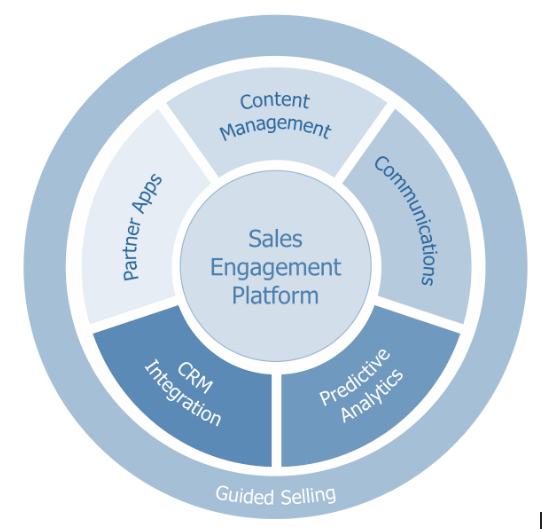The sales technology landscape has exploded with new vendors and solutions over the past two decades. And more emerge every day. As sales and marketing professionals, we’re inundated with product pitches and complicated frameworks on trends and tools.
Before sales engagement
Not too long ago, IT departments would provide sales reps with a standard set of tools – one for email, one for web conferencing and maybe even a productivity suite. Content lived on hard drives, and marketing teams shared and stored content in emails.
But organizations realized that the one-size-fits-all approach to sales technology stacks can actually complicate the sales process, slow reps down and mess with how sales, marketing and sales operations should work together to support customers.
At the same time, sales and sales operations teams significantly invested in sales force automation and CRM – hoping to drive shorter sales cycles with more robust tracking and measurement. However, these systems of record are optimized for capturing transactional information and optimizing internal processes. More and more businesses are realizing that SFA tools don’t actually help reps sell.
The rise of sales engagement
451 Research estimates that more than 1,000 vendors provide some form of sales intelligence, enablement or automation. Stitching together disjointed tools can be confusing — decreasing rep adoption, causing headaches for enablement and operations teams, and actually limiting productivity. But more modern and open solutions allows organizations to manage the entire sales and support process from a single, complete platform.
In the past year, leading analysts from 451 Research, Aragon Research, Gartner and Forrester have published reports highlighting the growth of sales platforms to improve the selling process. Aragon predicts the market will grow to $5 billion over the next five years. This growth is fueled by needs of sales teams to improve communication and engagement with customers with an integrated and easy to use platform; an all-in-one tool that enables sharing high-impact content such as video, delivers insight into buyer interest, surfaces the right content at the right time and seamlessly integrates with CRM.
What sales engagement does
Sales engagement platforms support the customer lifecycle from lead to close to support. Complete sales engagement platforms consist of sales communications, sales content management, analytics and guided selling, including:
- Content management with guided selling capabilities that surface the right content at the right time — by role, sales stage, industry and more
- Communications solutions for every channel — phone, email and in-person meetings
- Advanced engagement data analytics and predictive intelligence
It’s critical that any sales enablement tool you invest in is designed to connect with CRM and other partner applications so it aligns with your existing workflows and processes (especially between different departments that service customers).
Source: Aragon Research, 2016
The sales engagement platform centralizes the customer engagement data needed to inform the sales cycle based on the customer’s unique needs, responses and overall engagement.
This tool can help shorten sales cycles, as they equip reps with customer engagement data to more effectively respond to prospect signals (throughout the sales cycle). As 451 Research notes, these platforms provide insight and guidance based on interaction history to ensure the right message is used for the right prospect across formats and channels.
The case for sales engagement
Investing in a solution designed to meet the complete needs of your sales team, such as the platform that ClearSlide offers, is a critical step toward connecting and engaging with modern buyers more effectively.
Aragon Research estimates that sales engagement platforms can be more cost-effective than general-purpose point solutions (e.g., web conferencing and email tracking) and improve productivity by seamlessly integrating within sales reps’ existing processes. Additionally, sales leaders can move beyond simple activity tracking to capture more meaningful measures of customer interaction.
We have seen this transition from point solutions to platform before. We used to rely on separate, individual tools for word processing, email, spreadsheets and presentations. But today, we can’t imagine our days without Microsoft Office or Google Drive.
Sales software must follow suit with a platform tailored to improve rep productivity, deliver sales analytics, connect marketing and sales operations and empower sales teams to more effectively deliver value to customers. Don’t we all deserve something as easy and useful as “Office for Sales”?




